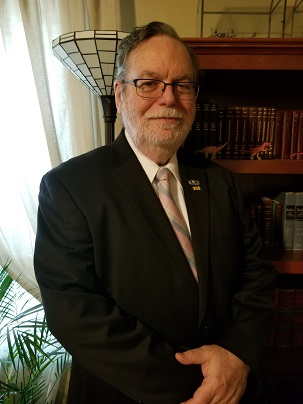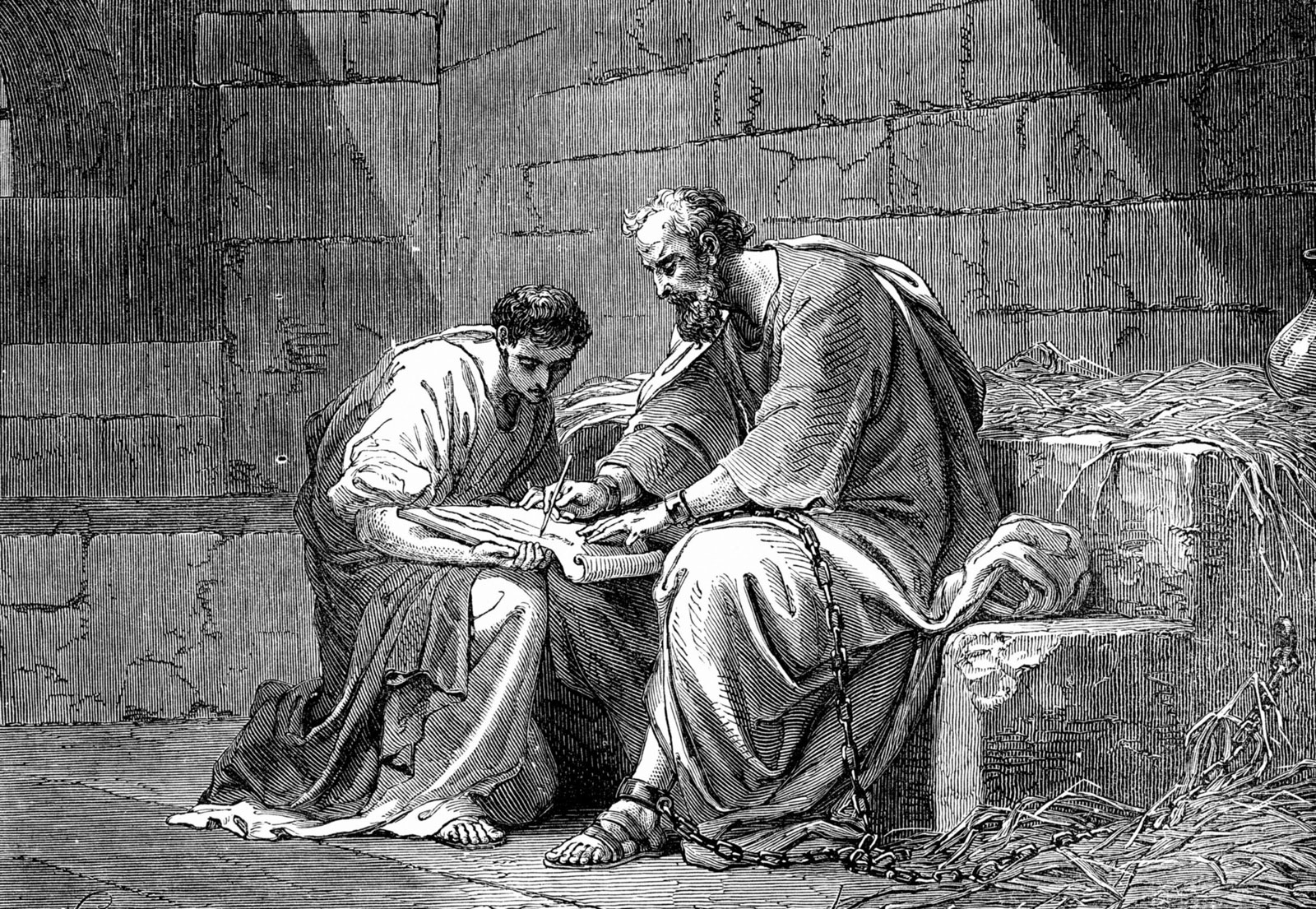
Stephen
Terry, Director

The Letter to the Hebrews and to Us
Commentary
for the January 1, 2022, Sabbath School Lesson
 "Brothers and sisters, I urge you to bear
with my word of exhortation, for in fact I have written to you quite briefly." Hebrews
13:22, NIV
"Brothers and sisters, I urge you to bear
with my word of exhortation, for in fact I have written to you quite briefly." Hebrews
13:22, NIV
This quarter, we are looking at
the Epistle to the Hebrews. This epistle is more fundamental to the theology of
Seventh-day Adventists than to most other denominations because of our focus on
the idea of a heavenly sanctuary modeled by the wilderness tabernacle of Moses
and recreated in the temples of Solomon, Zerubbabel, and Herod. Most Adventists
believe that Paul wrote the epistle. Paul's authorship was questioned as early
as the fourth century by Eusebius, but that may be immaterial as, apart from
authorship, the theology of the epistle was never seriously questioned with
even Eusebius quoting from it. Those who have proposed other authors have
suggested Barnabas or Apollos, both of whom were close companions of Paul and
fellow evangelists, raising and strengthening churches in his footsteps.
The epistle's canonicity argues
strongly for its authenticity as it was widely supported and approved for the
canon during an era in early Christianity noted for its anti-Semitism. The
church had been moving for over two hundred years to wean itself from Judaism,
setting itself apart from the Second Jewish Revolt against Rome in the early
second century and distinguishing themselves as followers of Christ as opposed
to following the appointed high priest in Jerusalem. The relationship between the
Jews and Christians during this time was more like a messy, protracted divorce
finally culminated in the late fourth century with the Council of Laodicea,
which along with forbidding the ordaining of women also forbade practices
considered Judaizing, such as the observance of the biblical sabbath of the
Decalogue. In this atmosphere, Hebrews may have found a favorable audience because
it supplants the Aaronic high priest in Jerusalem with an eternal Melchizedekian
priest in the person of Jesus Christ. Ironically addressed to the Hebrews, it
represented a theological foundation for final severance from the idea of the earthly
temple's continuing relevance. Notwithstanding this, some modern Christians
still insist on its relevance and believe that rebuilding the earthly temple is
an essential component of the Parousia. Adventist theology, mostly due to Hiram
Edson's cornfield vision, teaches that the sanctuary is only active in heaven
with implications for us on earth, but no longer applicable either to Jerusalem
or to the Aaronic order, to the delight of the remainder of the hundreds of
thousands of innocent animals exsanguinated on the grounds of that earthly temple.
The Jews have long had to deal with
the paradox of a faith based on the physical presence of the temple and its
ongoing services when, at times, a desecrated or destroyed temple no longer
provided those services. When the nation went into exile in Babylon for seventy
years, the desolated temple could not succor the Jews in their distress.
Eventually rebuilt by Zerubbabel, a later desecration by Antiochus Epiphanes,
who stopped the temple services for three and a half years, gave rise to the Maccabean
Revolt and the eventual restoration of the temple services, an event
commemorated by the celebration of Hanukkah. Once again, the Jews returned to the
slaughter of animals to absolve and purify the taint of sin from their midst.
While Zerubbabel's temple was a
restoration of the temple before the Babylonian captivity, it was much the
lesser compared to Solomon's temple. Therefore, Herod the Great resolved to
build a much more magnificent temple. This was the temple the disciples proudly
pointed out to Jesus at the beginning of Matthew, chapter 24. Because the
temple services did not cease during the reconstruction and transition to Herod's
temple, some do not see it as a separate temple. This may be a facile
explanation of the failure to recognize it as distinct from the Second Temple. There
is reason to believe that the Jews were reluctant to grant recognition to Herod
for its replacement since he was an Edomite descended from Esau, not a
descendant of Jacob. Dating back to the time of Ezra and Zerubbabel, the returned
exiles opposed outsiders assisting with the reconstruction they were doing. As
part of their agreement, Herod had to work around the actual temple building as
the priests insisted on doing the reconstruction of that part of the complex themselves.[i]
Despite all the effort to
construct a magnificent temple ensuring the continuation of the services there
for generations to come, the temple was again destroyed approximately three quarters
of a century after Herod the Great's death. This was as Jesus foretold in that
same passage in Matthew, chapter 24. This time, however, the temple would not
rise again and has remained desolate to the present day, almost two millennia
later. Over all those centuries, the Jews dispersed across the globe, a persecuted
and marginalized people. Millions of Jews perished in the death camps and the
poison gas chambers that malevolently blossomed across the countries subjugated
by German Nazism. Some might feel that the blood of all those animal sacrifices
was replaced by the blood of so many human lives in the absence of the temple.
This would add importance to the argument for rebuilding the temple anew. But
as we shall see over the coming quarter, that argument is specious if the
Aaronic order has been supplanted by a better, more efficacious one. Crucial to
this realization is the passage that tells us, "It is impossible for the blood
of bulls and goats to take away sins." (Hebrews 10:4)
This begs the question, if they
cannot purify us from our sins, why did all those animals have to die? The only
reason was the stoniness of our own hearts toward suffering. Jesus stated that
was the case when asked about the Mosaic ruling concerning divorce. Could it be
that much of the draconianism in the Old Testament has foundation in the same
reason? We can understand a little of that stoniness when we lovingly raise a
calf, give it a name as a pet and then go along to see what happens to the poor
animal at the abattoir. The hamburger we eat today is farther removed from its
source than the offering meat consumed by the penitent Jew so it may be easier
for us to be indifferent to the suffering, but both involve slaughter on an
industrial scale. Despite the intensity of that, we still can take the idea of
the death and misery of the cross in stride. It all has become such a part of
who we are that we lose sight of the true character of God. At the same time as
the priests ministered in the temple with their hands drenched in the blood of sacrificial
animals, Jesus quoted the prophet Hosea, who in speaking for God, said "I
desire mercy, not sacrifice." (Hosea 6:6)
Humanity tends to become how they
view the character of God. If God appears harsh, exacting, and vengeful, so grows
the person. But if God appears loving, compassionate, and empathetic, those
traits will grow within a person's heart over time. As we saw with the fate of
Jesus, the former can destroy the latter, believing they are doing God's will
in the process. Ironically, the destructive act, consummated on Calvary,
provided a way out. While our hearts may seem as cold and as hard as granite,
change is possible. God offers us the opportunity to rediscover what we were meant
to be. We can turn from the coldness of death that plagues so many of our relationships.
We often approach relationships
asking what the other person has done for us lately. In other words, we require
sacrifice on their part before we will open ourselves to a relationship with
them. We even see this in our openness to God. We refuse to believe unless he
does something for us first. Every breath we take, every bite we eat comes to
us through the grace of God. We take for granted these things will always be
there, but contemporary issues with global pandemics have taught us that we
cannot even count on toilet paper, let alone food. There were weeks during the
early days of the pandemic when finding more than a dozen eggs for sale in the store
was a miraculous event.
Our society is less agrarian
than it used to be. There was a time before industrialized farming when people
lived close to the soil and the cycle of the seasons. Farm families tended to
be praying families. They understood faith in something greater than themselves
each planting season. They could not control the rain or the storms, the frost,
or the biting wind. They appealed to God's compassion, and not only did they
find God's compassion during trial, but they also found that those prayers
changed them as well, and they became like the God they believed in. They, too,
became compassionate, rising and helping their neighbors when disease, injury,
or other disaster threatened. This is what God intended with our creation. We
were to love God, and with the grace found in his arms to model his compassion through
loving our neighbors.